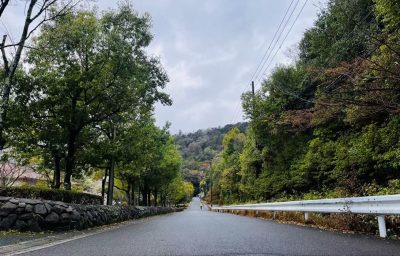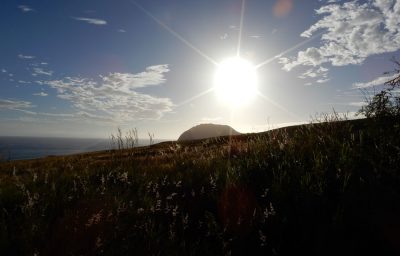COMMUNICATIONS
A History of Gender and Mobility in the Pacific World
I arrived in the spring of 2021 to a Nichibunken awash with cherry blossoms in full bloom. The seasons turned, and before I knew it, a year had passed. As I sit here facing my manuscript, the buds of the shidare cherry trees at the entrance to Nichibunken are once again opening to greet a new spring. Yet this year, which for me has flashed past, has also been defined by the ongoing Covid crisis and a war in Ukraine that seem impossibly removed from the peace and tranquility I have experienced here.
For this year of both calm and disruption, I have been in residence at Nichibunken as a Visiting Research Scholar and am truly grateful to have been able to immerse myself in this exceptionally privileged research environment. Although I have been forced by circumstances to make numerous changes to my research plan, and I worry about the direction the world is heading in, let me accentuate the positives here.
The task I have taken on is a reappraisal of the history of gender and migration in the Pacific world. One of my objectives has been to use gender, migration and mobility as lenses to explore how ordinary people, rather than intellectuals and politicians, have affected the course of Japan’s modern history. A second has been to consider from a global historical perspective what connects and divides the experiences of early modern and modern Japanese both at home and abroad.
For a year, I have been able to devote myself to study. I have had precious time to pursue my research; I have availed myself of the abundant resources of the library; I have learned from the new and intellectually stimulating work of colleagues; and I have been supported in many ways by the administrative staff. Allow me to express my deepest gratitude to Director-General Inoue Shōichi, to my counterpart Professor Yasui Manami, and to all the faculty and staff––academic and administrative––here at Nichibunken.
Away from my research, this was a year when I drew much consolation from the rich natural environment that surrounds Nichibunken. The birdsong in my ears when I open the window in the morning; the animals I encounter on my way through the bamboo groves; the views of the Katsura River and Kyoto basin which suddenly appear as I ascend the mountain paths of the wild bird park behind Nichibunken; and the mountains steaming with mist and fog. These have all provided great comfort, as have the Kyoto street corners along which I have ambled on those occasions I descended Ōeyama. The pandemic prevented me from travelling far, but I was always delighted by the discoveries I made.
In the summer of 2022, I will begin a new project at Nichibunken as a JSPS (Japan Society for the Promotion of Science) Visiting Research Fellow, focusing on Japanese settler colonists and migrants in the Pacific world and Brazil. Allow me to append here my gratitude for this past year, my hopes for the future, and my prayers for peace.

Postal stamp entitled “Japanese Immigration” (imigração japonesa) issued in Brazil (1974). From the series "Origin of the Brazilian Population."(Post of Brazil, Public domain, via Wikimedia Commons)
https://commons.wikimedia.org/wiki/File:Stamp_of_Brazil_-_1974_-_Colnect_263918_-_Immigration_-_Japonese.jpeg




